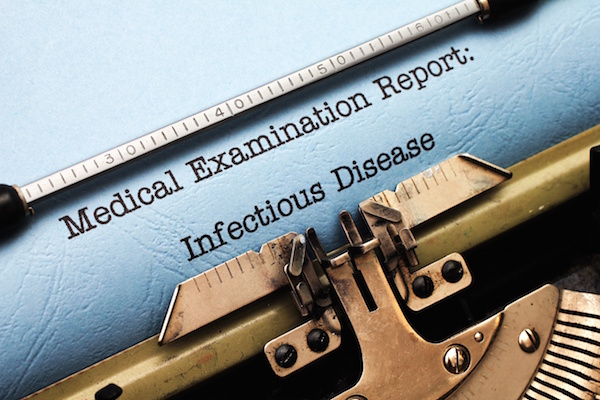
WEDNESDAY, June 22 (HealthDay News) — Can a dishwasher be both an excellent cleaning machine and an agent for infectious disease? Possibly, according to a new study.
The concern stems from an analysis of 189 household dishwashers in 101 cities around the world. Sample swabs taken from the rubber seals around the dishwasher doors revealed that more than six in 10 dishwashers (62 percent) contain some form of fungi, said the study team from the University of Ljubljana in Slovenia.
What’s more, 56 percent of the dishwashers — installed in homes in Europe, North and South America, Israel, Africa, Asia, and Australia — contained at least one of two different species of black yeast.
Slow-growing forms of black yeast — such as Exophiala dermatitidis and E. phaeomuriformis — can cause “systemic disease in humans,” the authors reported. Black yeast, they added, was the type of fungi most frequently detected.
“The bottom line is that this pathogenic black yeast species occurs rarely in nature, but in very high numbers in the dishwashers,” said study co-author Nina Gunde-Cimerman, from the biology department of the University of Ljubljana.
But do dishwasher pathogens threaten the well-being of healthy people?
“No,” concur a pair of American researchers who did not participate in the investigation.
“Frankly, this is of little or no medical importance,” said Dr. Henry F. Chambers, chief of infectious diseases at San Francisco General Hospital. “Now I don’t dispute that they found these organisms. But I’m not surprised at all. These are hardy organisms. You go in your shower and you will find microorganisms in your shower. Behind your toilet as well.
“We shouldn’t overestimate the importance of these organisms relative to what is already in or on your body,” Chambers added. “There are by some accounts 10 times more microorganism cells on or in your body than there are your own cells of your own body. That amounts to thousands of billions. And secondly, nothing they found is able to cause disease in people who are not extremely immunocompromised.”
Dr. Philip Tierno, director of clinical microbiology and immunology at New York University Langone Medical Center, echoed Chambers’ sentiments.
“We’re exposed to large amounts of fungi in everyday life,” he observed. “When you consume any kind of dairy product you’re likely to come into contact with fungi. There are more fungi — that is, a mold fungus with spores — in an ounce or two of cheese than you’re likely to get from exposure to a dishwasher. And, in any case, 99 percent of the organisms that we come into contact with on a daily basis are totally innocuous.”
The study authors, however, are concerned about that other one percent. More research is needed, they said, to determine whether E. dermatitidis in appliances can cause humans harm.
Writing in the current issue of Fungal Biology, the authors said that the presence of black yeast and similar organisms within the “extreme environment” of a dishwasher was “remarkable,” given their harsh exposure to high heat and substantial amounts of detergents, alkaline and salt.
“With the new eco regimes that we all use nowadays (meaning lower temperatures, milder detergents), they thrive,” Gunde-Cimerman said. “Not much” can be done to combat it, she added.
The presence of these fungi raise concerns about other humid indoor environments and water-retaining appliances, the authors said. They noted that continuous exposure to moisture, high acid content, high temperatures, and residual organic matter (in particular, food) are features that dishwashers share in common with bathrooms, sinks, kitchens, and coffee makers.
Black yeast and similar organisms are “opportunistic invaders,” the scientists added. This means that individuals with a compromised immune system are particularly vulnerable.
The authors said that black yeast has been found to colonize the lungs of cystic fibrosis patients. Similarly, white yeast (also detected in dishwashers in the study) is a familiar problem in hospital settings, where it can form a slimy coating around prosthetics, catheters, and tubing.
Even in extremely immunocompromised people exposed to black yeast and similar organisms, however, “we’re talking about very rare infections,” Chambers said.
More information
For more on infection control, visit the U.S. National Institutes of Health.

